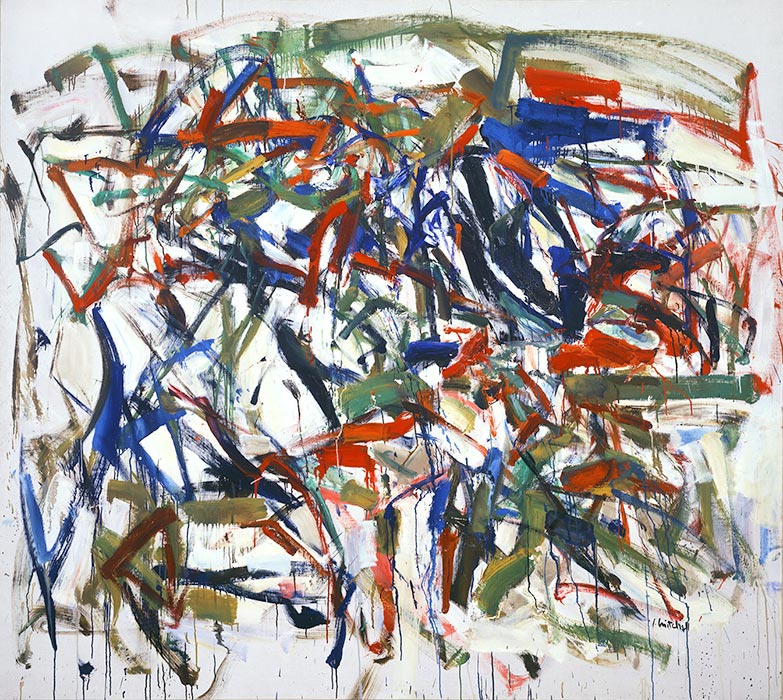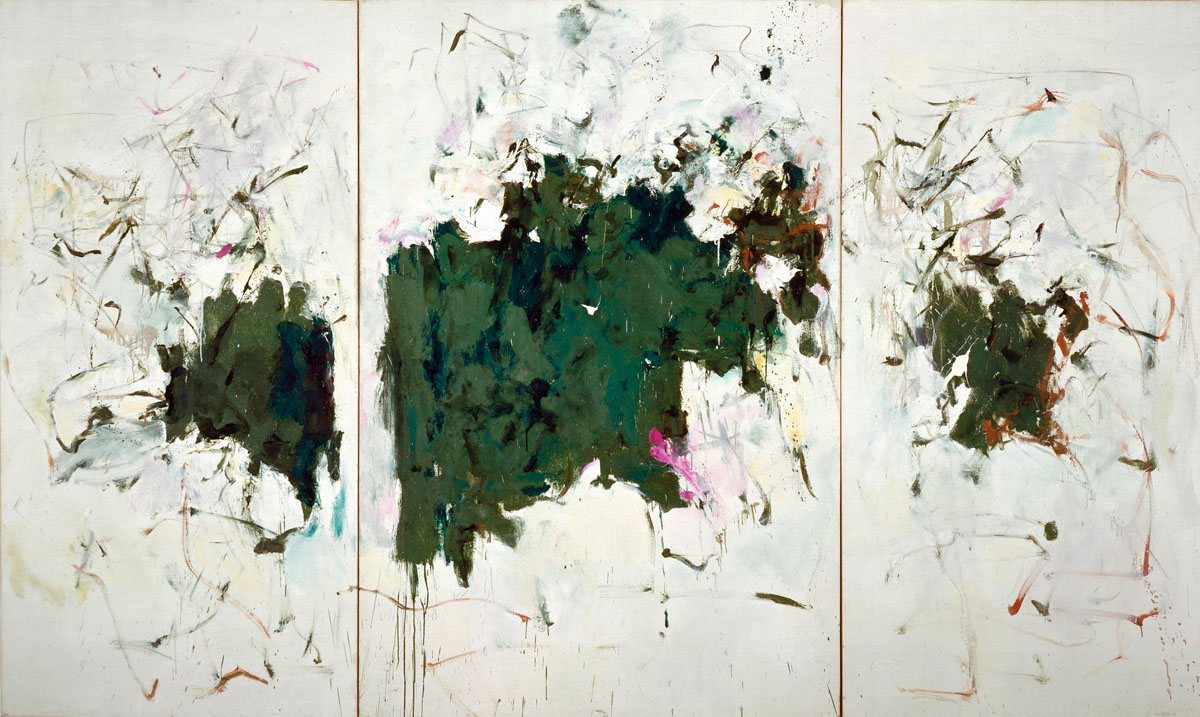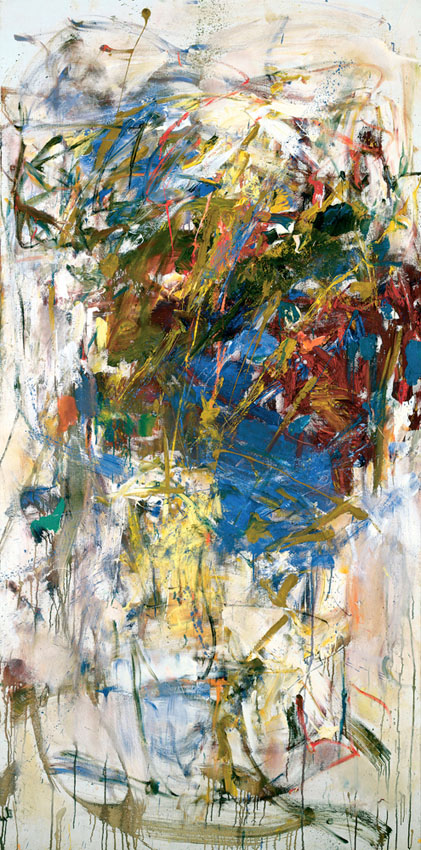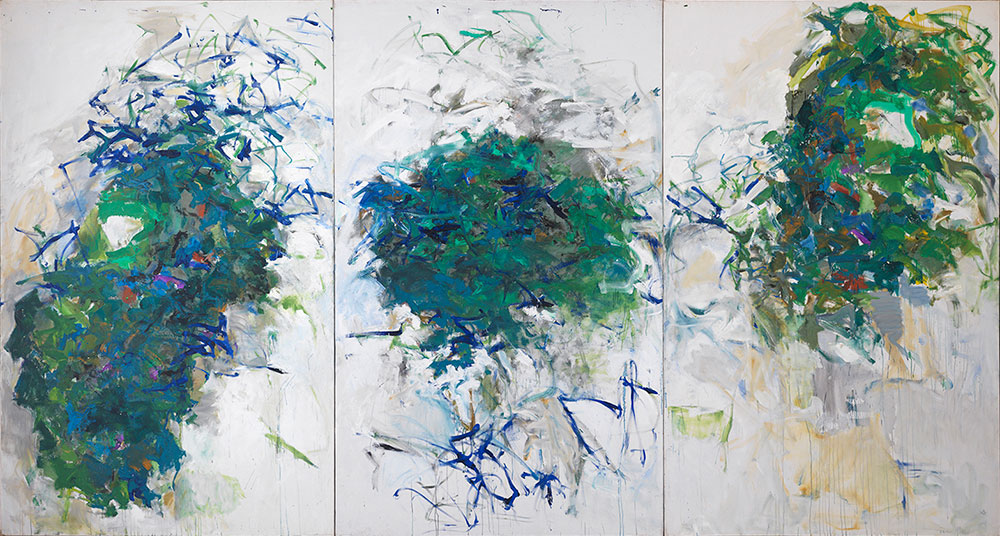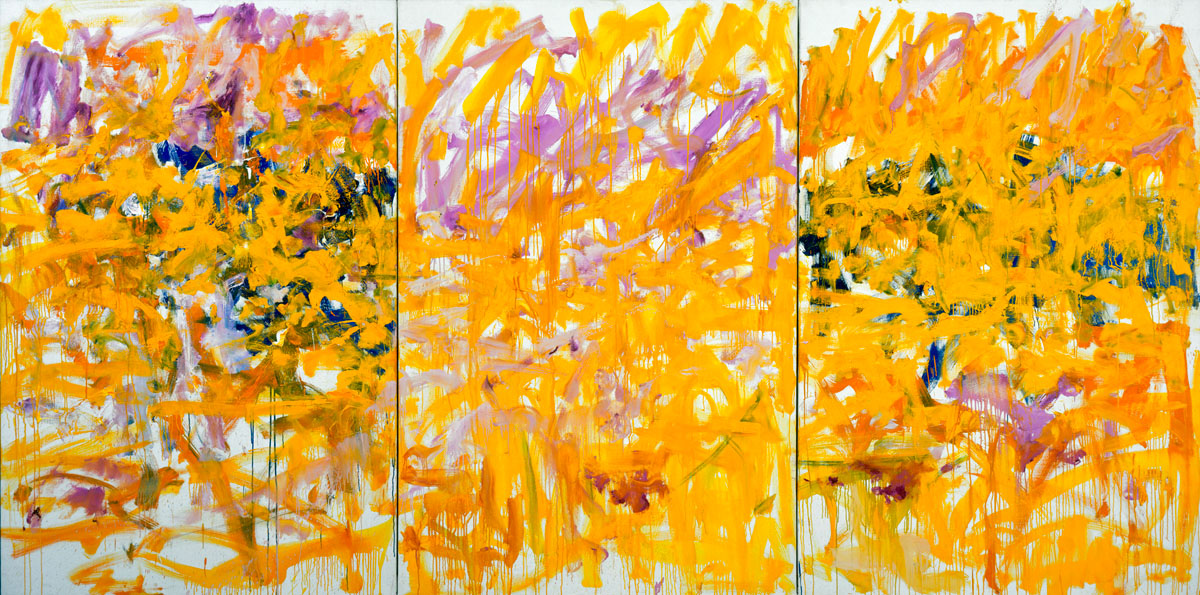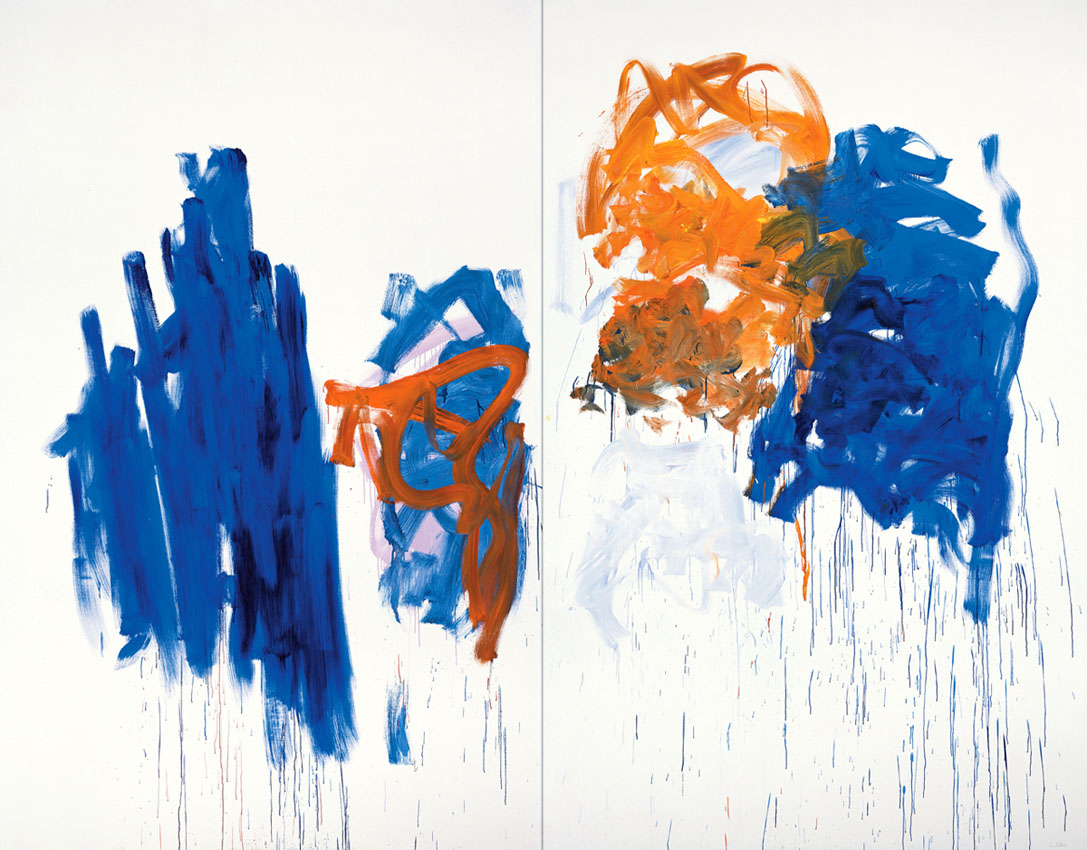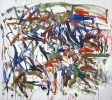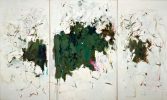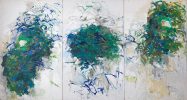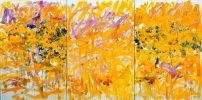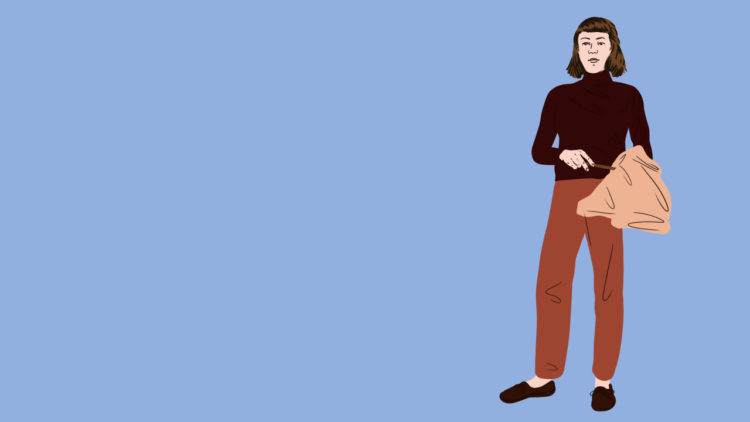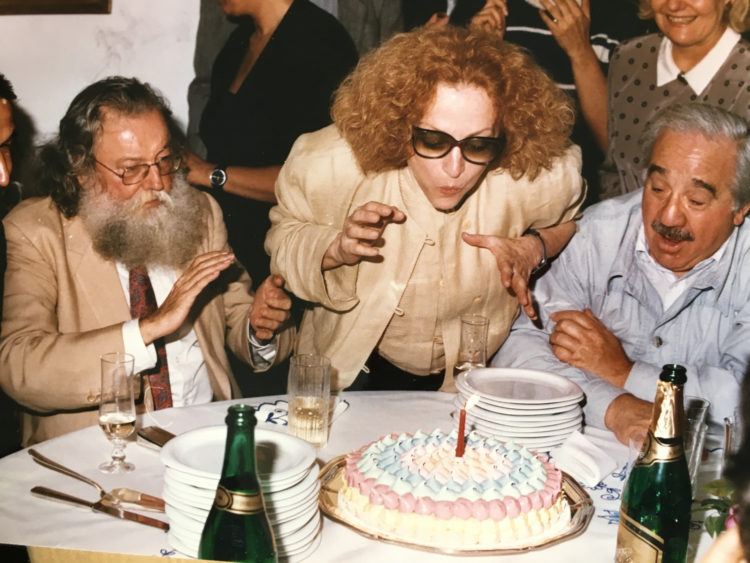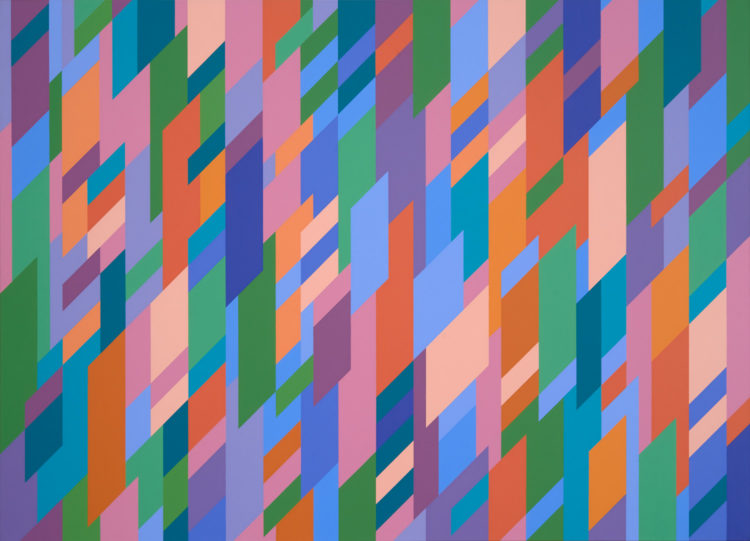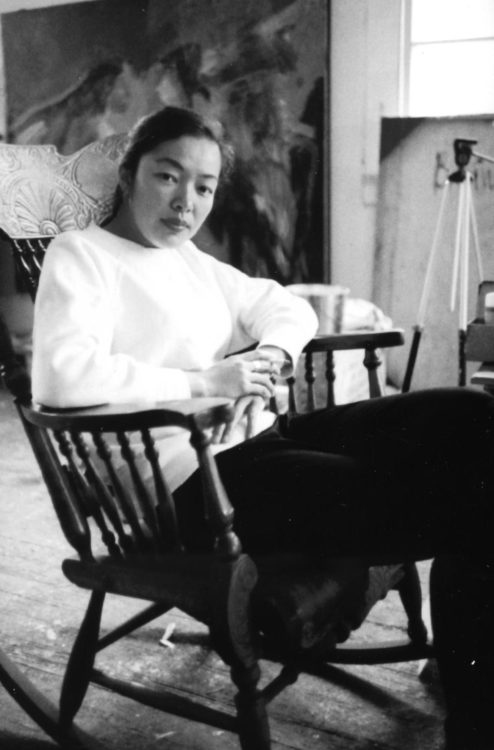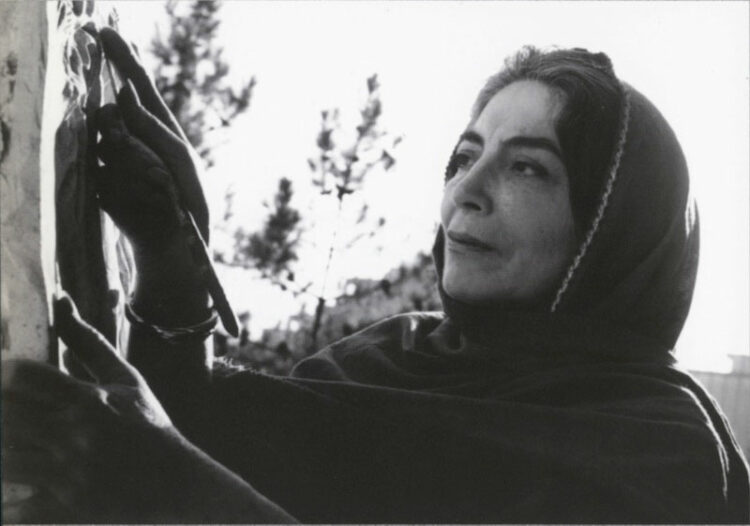Joan Mitchell
Bernstock Judith E., Joan Mitchell, New York, Hudson Hills Press, 1988
→Nochlin, Linda (ed.), The Paintings of Joan Mitchell, exh. cat., Whitney Museum of American Art, New York; Birmingham Museum of Art; Modern Art Museum of Fort Worth; Phillips Collection, Washington, D.C., (2002–2004), New York/ Berkeley/Los Angeles/London, Whitney Museum of American Art/University of California Press, 2002
Joan Mitchell, Galerie Nationale du Jeu de Paume, Paris, 22 June–11 September 1994; Musée des Beaux-Arts, Nantes, 24 June–26 September 1994
→Joan Mitchell, Young Museum, San Francisco, 1 November 2006–31 December 31 2007
→Joan Mitchell Retrospective: Her Life and Paintings, Kunsthaus Bregenz, 18 July–25 October; Museum Ludwig, Cologne, 14 November 2015–22 February 2016
Peintre états-unienne.
Joan Mitchell is one of the greatest American painters of the 20th century, the equivalent of her abstract expressionist contemporaries, Jackson Pollock (1912-1956) and Mark Rothko (1903-1970), though she hated any kind of labelling in art. She was the daughter of a poet and a doctor who was also an amateur artist, and hesitated for a while between poetry and visual arts. In the wake of her cultivated parents, she studied at the Francis W. Parker School in Chicago, where her art teacher introduced her to Oskar Kokoschka. At the School of the Art Institute of Chicago, she attended classes given by German artist Robert Von Neumann (1888-1978) and Louis Ritman (1889-1963), a Russian painter who had spent time at Giverny. Choosing a kind of self-imposed creative isolation, she spent most of her career in Vétheuil, a village located above the Seine, which she claimed she found “by accident,” only a few kilometres from Giverny, two places “invented” by Claude Monet (1840-1926), who, she said, had less of an influence on her work than Paul Cézanne (1839-1906) or Vincent Van Gogh (1853-1890).
In 1948, J. Mitchell spent more than a year in France where she rented a studio in the rue Galande in Paris. After a trip in Le Lavandou at the beginning of 1949, she married Barney Rosset (who would later become an important publisher). They returned to New York City at the end of 1949 where she briefly worked in the same building as Philip Guston (1913-1980) and patronized the haunts associated with the American art avant-garde, like the Artist’s Club, where the only other women allowed in were Elaine de Kooning, Lee Krasner, and Helen Frankenthaler. Though her works were abstract as early as 1951, she described herself as a “visual”, sensation-seeking painter. The kind of painting she developed during this period, large, luminous, energetic, is based on nature, in which colour plays a critical part. She said: “I painted remembered landscapes that I took with me, as well as the memory of the feelings they inspired, which of course changed over time.”
Even though her creative process was slow, J. Mitchell’s work can be recognized by its swift strokes, expressive lines, scattered and swarming compositions, harsh chromaticism, meditative spaces, and reversal of the subject. Pierre Schneider also talks about a perpetual shuttle between interiority and exteriority. In Paris, she met Sam Francis and French-Canadian Jean Paul Riopelle (1923-2022) with whom she would share her life for over twenty years. Between 1955 and 1959, she spent as much time in Paris as New York and eventually elected to choose France as her new adoptive country. Starting in 1967, the year she bought her house in Vétheuil where she didn’t settle until the following year, her Parisian art dealer Jean Fournier exhibited her regularly, at a time when American art shifting towards Pop Art and the beginnings of minimalism. The use of polyptychs in her work during the second half of the 1960s (Girolata Triptych, 1963; Chicago, 1966), lent additional power to her work. In 1969, she created her first Tournesols paintings as a tribute to Van Gogh, launching a collection of series (Tilleul, 1978; La Grande Vallée, 1983-1984; Champs, 1990). Reaching a wide audience in 1974 during a show exhibiting her recent works organized by Marcia Tucker, the famous curator of the Whitney Museum of American Art in New York, her work then received support from New York art dealer Xavier Fourcade (from 1976 to 1987). After his death, she found representation with the Robert Miller Gallery in New York. In 1979, Mitchell separated from Riopelle(. Her work was featured in a first retrospective at the musée d’art modern de la Ville de Paris (1982). In 1989, she set up a studio in rue Campagne-Première for her stays in Paris, where she drew with pastels. With respect to her pictorial process, she describes it with disarming honesty: “I am moved when colours are put together on a flat surface […], not excited by an idea.”
© Éditions des femmes – Antoinette Fouque, 2013
© Archives of Women Artists, Research and Exhibitions, 2017



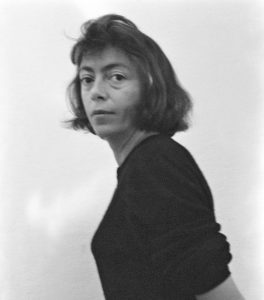
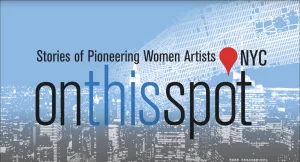 Joan Mitchell | On This Spot NYC, February 2024
Joan Mitchell | On This Spot NYC, February 2024 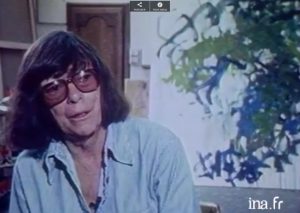 Joan Mitchell's Interview in her studio
Joan Mitchell's Interview in her studio 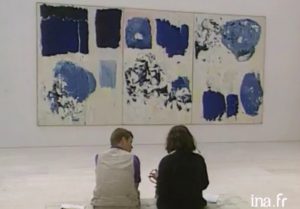 Joan Mitchell's portrait
Joan Mitchell's portrait 